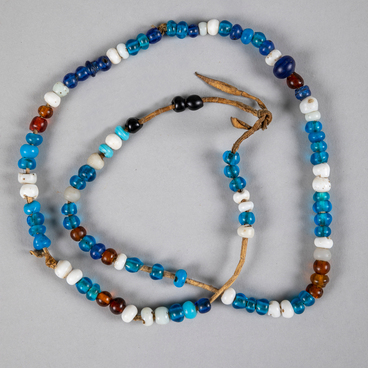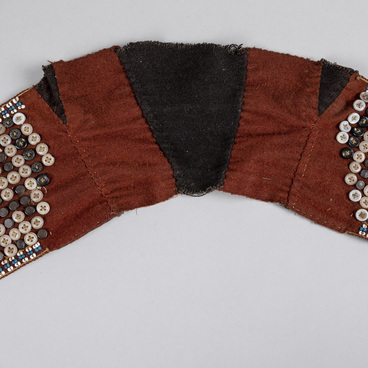Winter mitts are sewn from deer pelts with the fur outside. There are also summer versions made of rovduga (deer suede leather). As a rule, women’s, men’s, and children’s mittens are decorated with patterns.
Mittens are easily lost. To avoid this, they have leather straps sewn to them for hanging them on a belt, or the mittens themselves are attached to clothes. In cases when the mittens are tightly sewn to the sleeves, cuts are made at the wrist and covered with a flap. The flap protects from frost and wind, keeping the hands warm, while at the same time allowing one to take off the mitt if necessary. This is useful for various tasks that are difficult or impossible to perform in mittens.
Craftswomen are very proud of their ability to make beautiful things, because not every Khanty woman can cut a pattern and sew thin strips of fur or leather beautifully and neatly.
Craftswomen imbue even the most abstract geometric forms with a clear meaning that reflects their ideas about the world. They depict animals, birds, plants, natural phenomena and people: “navarne” — “frog”, “shovyr pal” — “hare ears”, “nyukhas” — “sable”, “vasy olyn” — “brood of ducklings”, “pity luk” — “capercaillie”, “holkh tykhl” — “the nest of the black raven”, “ai sumat nuv” — “birch branch”, “serhain yuh” — “flowering bush”, “vot hoompy” — “rolling waves”, “khe shop” — “human body”. The names of the patterns reflect their similarity to real-life objects.
Some patterns were made for special occasions or events. For example, a glove with the bear’s footprint pattern was given to a hunter who killed a bear.
The pattern always reflects the purpose of the object on which it is depicted, taking into account its shape and material. And finally, every pattern is assigned a certain meaning.
The pattern serves three purposes: communicative (conveying certain information), magical and aesthetic. It is believed that a thing is ready for use only when it is decorated with a pattern. It is for this reason that patterns in the culture of the Khanty people are extremely durable and “die” along with the items on which they are depicted. In some cases, the pattern survives them, and proves to be more enduring and resilient, continuing to live on in non-traditional items and becoming a part of a new culture.





